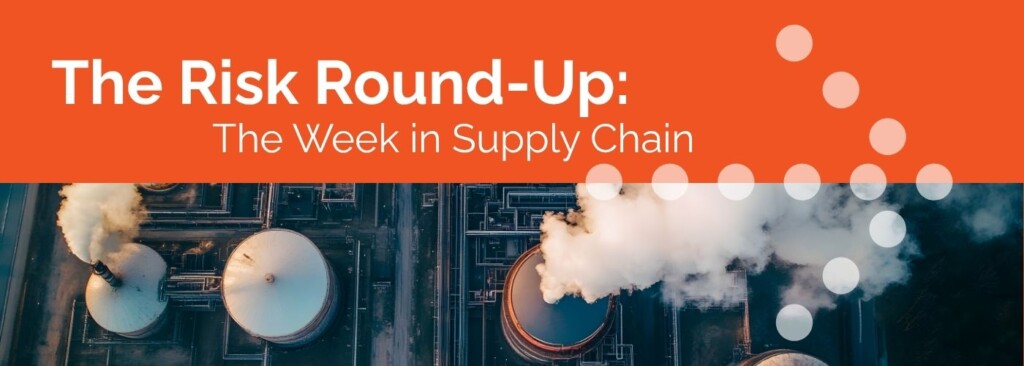
This week’s supply chain risk news
A factory fire is complicating life for companies that need aluminum. Because of tariffs, sourcing more from overseas won’t be cheap
A fire at a Novelis plant that supplies some 40 percent of the U.S. auto industry’s aluminum sheet could disrupt operations for carmakers for the next several months.
The hot mill at the Oswego, New York, plant is expected to be back online early next year. In the meantime, Novelis is turning to overseas plants and looking for other ways to offset the supply gap. But alternative supplies from abroad will be markedly more expensive due to a 50 percent tariff.
Forbes reports the impact for Ford will be particularly significant because it’s “the largest user of the Novelis plant, and its F-150 pickup is one of the industry’s most significant users of aluminum.” Toyota, Hyundai, and Stellantis also rely on Novelis for aluminum sheets.
Though the fire occurred in September, its impact was not widely reported until this week.
Imported drugs, trucks, and lumber: the latest on tariffs and trade
The most recent round of tariffs from the U.S. represents a shift; it’s less about negotiating with individual countries and focuses instead on specific products.
The headline items include patented and branded pharmaceuticals, but not generics or drug ingredients. The branded pharmaceutical tariffs notably don’t apply to the EU or Japan because those countries have worked out deals of their own. Breaking ground on pharmaceutical manufacturing plants in the U.S. is another way companies could sidestep the tariffs.
Imported heavy-duty trucks are also facing a 25 percent tariff. This will likely come as a blow to Mexican truck makers. Then there are the tariffs on some furniture products, on softwood timber and lumber, and on kitchen cabinets. All unhappy news for Canadian wood suppliers.
Other potential tariffs down the road, pending an investigation, could target robotics, industrial machinery, and consumable medical products like syringes, sutures, catheters, and gauze.
Even as these new policies stack up, some countries, like South Korea, are still ironing out details of their trade deals. We have more details and context in our Risk Center
These are not the makings of a bright Christmas
For the last few years, by October, you could’ve counted on the National Tree Company to have imported thousands of metal shipping containers worth of Christmas decorations into the U.S. for sale ahead of the holidays. This year, things are different. Volumes in August were down 58 percent from the year before; September was off some 70 percent.
The issue is that, while artificial Christmas trees are big business, around 90 percent of them are made in China. As a result, the National Tree Company, a leading U.S. importer of artificial trees, says they’ve brought in considerably less inventory ahead of this year’s holiday season. Citing tariffs, the company has also raised prices 10 percent. This does not bode well for folks who love to deck the halls.
Things could change, of course. A breakthrough trade deal with China could emerge ahead of a deadline in November—and the U.S. Supreme Court could, perhaps, decide to strike down some of the tariffs next month. But in the meantime, lovers of Christmas might not want to wait until late November to pick up new décor.
Supply chains are full of risks. Who you trust to help manage yours shouldn’t be one of them
Supply chain risk management is catching on, and with good reason. But not all the software in this area is created equal. If you’re considering investing time and money in it, you need to ask some key questions.
For starters, is the proposed solution end-to-end? Risks in sourcing, planning, manufacturing, and logistics are all interconnected. Addressing these risks strategically hangs on having a holistic view across all functions—while intelligently filtering out noise and needless alerts.
Questions about data are paramount: Where does incoming data come from, how good is it, and how well can it be put to use? The risks range from weather and climate impacts to financial instability to factory fires to legal complications to geopolitics.
Here, serious players know the key locations and have supply chain intelligence pros on the ground who speak the local language. Still, gathering millions of data points is senseless without Big Data expertise to apply that information meaningfully. AI is crucial here—as is human verification.
Find out what else you need to uncover about potential SCRM solutions providers on our blog.
